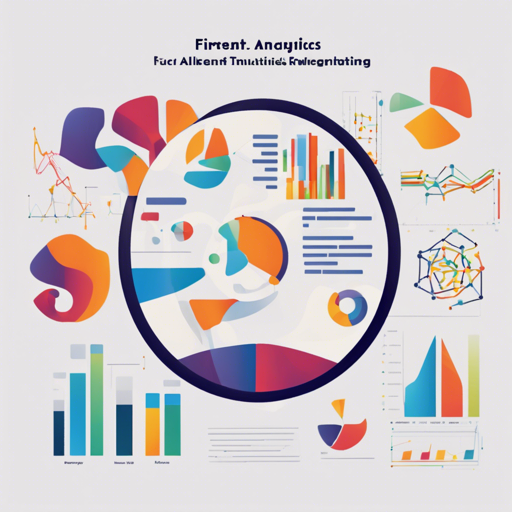Are you looking for a powerful data analysis tool that can help you build insightful charts, tables, reports, and dashboards quickly? Look no further than FireAnt! In this blog post, we’ll explore how to install and use this incredible tool to streamline your data analysis, making it both effortless and effective.
What is FireAnt?
FireAnt is a data analysis tool designed for rapid report generation and visualization creation, eliminating the tedious process of writing complex queries and formatting charts manually. It’s the perfect companion for data professionals, particularly when working within Jupyter notebooks or the Python shell. FireAnt allows you to focus on generating insights from your data without getting bogged down in technical details.
Installation
To get started with FireAnt, you’ll need to install it using pip. Open your terminal and run the following command:
pip install fireantUsing FireAnt: The Basics
At its core, FireAnt revolves around the concept of FeatureDataSet, which serves as a framework for defining metrics and dimensions. Think of it as a well-organized toolbox that provides everything you need to work with your data efficiently.
Imagine you’re a builder, and your construction site represents your data environment. Different tools (metrics and dimensions) allow you to create various structures (charts, tables, reports). FireAnt collects all these tools in a single toolbox (FeatureDataSet) to save you from the hassle of navigating through multiple storage spots (custom queries).
Building a Data Set
To set up your dataset effectively, you’ll need some definitions: a database connector, table references, and your desired dimensions and metrics. Here is how you can instantiate a dataset:
from fireant.dataset import *
from fireant.database import VerticaDatabase
from pypika import Tables, functions as fn
vertica_database = VerticaDatabase(user=myuser, password=mypassword)
analytics, customers = Tables(analytics, customers)
my_dataset = DataSet(
database=vertica_database,
table=analytics,
fields=[
Field(alias=customer, definition=customers.id, label=Customer),
Field(alias=date, definition=analytics.timestamp, type=DataType.date, label=Date),
Field(alias=device_type, definition=analytics.device_type, type=DataType.text, label=Device_type),
Field(alias=clicks, definition=fn.Sum(analytics.clicks), label=Clicks),
Field(alias=customer_spend_per_clicks, definition=fn.Sum(analytics.customer_spend / analytics.clicks), type=DataType.number, label=Spend per Clicks)
],
joins=[
Join(customers, analytics.customer_id == customers.id),
],
)In the analogy of our construction site, you’ve just opened your toolbox. You’re defining which tools (fields) you will need to create the structures (reports/dashboard) you desire.
Building Queries with a Data Set
Now that you have a dataset ready, it’s time to build a query to fetch the data you need! You can chain method calls to refine your query and select which elements to include in the outcome. Here’s an example:
from fireant import Matplotlib, Pandas, day
matplotlib_chart, pandas_df = my_dataset.data
.dimension(
day(my_dataset.fields.date),
my_dataset.fields.device_type,
)
.filter(
my_dataset.fields.date.between(date(2018, 1, 1), date(2018, 12, 31))
)
.reference(WeekOverWeek(my_dataset.fields.date))
.widget(
Matplotlib()
.axis(Matplotlib.LineSeries(my_dataset.fields.clicks))
.axis(Matplotlib.ColumnSeries(my_dataset.fields.customer_spend_per_clicks))
)
.widget(
Pandas(
my_dataset.fields.clicks,
my_dataset.fields.customer_spend_per_clicks
)
)
.fetch()
matplotlib_chart.plot()
print(pandas_df)This process is akin to selecting which materials (dimensions) you will use, assembling them (filtering), and finally constructing your building (visualization) using those materials. You’re maximizing efficiency and precision.
Troubleshooting Tips
If you encounter issues while using FireAnt, here are some troubleshooting ideas:
- Installation Issues: Ensure you’re using the correct Python version and that pip is installed correctly.
- Connection Problems: Double-check your database credentials and the connection string.
- Query Errors: Review your field definitions and ensure that the tables and aliases are correctly referenced.
For more insights, updates, or to collaborate on AI development projects, stay connected with fxis.ai.
Conclusion
FireAnt is a fantastic tool for anyone involved in data analytics, enabling the quick creation of reports and visualizations. By leveraging the power of FeatureDataSets, you can streamline your analysis, making it easier than ever to focus on what truly matters: deriving insights from your data.
At fxis.ai, we believe that such advancements are crucial for the future of AI, as they enable more comprehensive and effective solutions. Our team is continually exploring new methodologies to push the envelope in artificial intelligence, ensuring that our clients benefit from the latest technological innovations.

